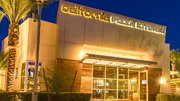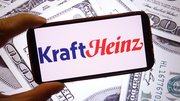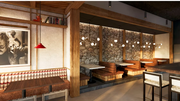News
Cash option: Add an on-site ATM
March 23, 2005
John McNulty wishes he didn't have to accept credit cards, but he'll trade pizza for plastic any day if that's what his customers are carrying.
"I could not operate my business without taking cards," said McNulty, a one-unit Shakey's Pizza franchisee in El Monte, Calif. "About 26 percent of my transactions come from cards, and about 65 percent of those are from debit cards."
With every swipe of a card, merchants pay a fee of 2 percent to 3 percent of the total transaction; debit card fees range between 30 cents and 50 cents. Add in fractional percentages for interchange fees paid to the card issuer, and profits shrink further.
To counter that, McNulty installed an ATM machine to provide his customers a cash option. On average, 167 people withdraw money from it monthly, and at $1.50 per use, that puts $250 back into McNulty's pocket — not enough to offset card charges, "but at least a little something," he said.
The potential to generate added revenue from such a small segment of floor space is enticing, but it comes at a cost. Operators looking to buy an ATM can expect to shell out $3,500 to $5,000, plus the cost of a standard dial-up phone line. The operator also shoulders the cash replenishment responsibilities and oversees service problems, such as paper jams.
Privileges of ownership allows the merchant to receive 100 percent of the surcharge revenue (the fee paid by the ATM user), which would allow a top-end machine to pay for itself within a couple of years — even on modest transaction traffic like McNulty's.
Maximizing profit
Generating profit from ATMs depends on transaction volume. Though an ATM in every local pizzeria would be convenient for customers, it wouldn't be profitable for all operators. Some stores, especially delivery-carryout units, lack the foot traffic to sustain such an investment.
According to Doug Falcone, chief operating officer of Access to Money, an ATM reseller in Whippany, N.J., an operator who is thinking about installing an ATM should have an average of at least 250 people crossing the threshold daily.
Customers have to know the ATM's there; the well-known "ATM Inside" window sign for bringing customers in. Then, once customers are inside, they have to know where the ATM is in the store. That requires good positioning and modest signage.
Whether it's an added customer convenience or a modest profit center, Duessa Holscher, a partner with FireFly Technologies, a Portland, Ore.-based POS company, said operators can gain the most by using the ATM to keep people from using cards.
"That's a huge, huge reason for it," she said. Both she and Falcone said some of their clients stopped taking cards altogether when they installed an ATM.
"They just say, 'We don't take cards. Go get the cash,'" Falcone said. "They'll even drop the surcharge to a modest fee like 25 cents or 50 cents to create an incentive to use the ATM."
At the end of the day, customers like payment options, and if operators help educate consumers on the benefits of using cash, it could work to the benefit of both parties.
"It's a decision that the store owner has to make if they want to combat cards with an ATM or just eat the cost," Falcone said. "It's an option they ought to consider."










